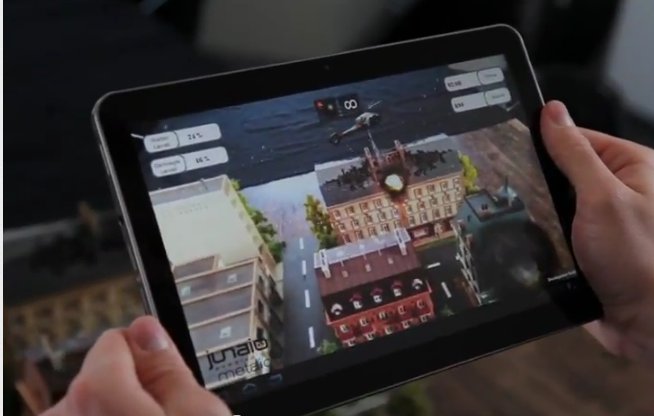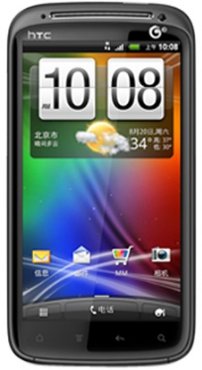Metaio has unveiled plans to add 3D Object Tracking and Visual Search to its free mobile Augmented Reality SDK for Android and iOS, part of the Augmented City platform. This SDK is optimized by major ARM chipset providers, and assembles technologies necessary for creating interactive and immersive AR experiences, such as the overlay of virtual information on building facades, city streets and almost any 3D real world object or device, says the company. Metaio Mobile SDK is specifically optimized for Texas Instruments OMAP4460/4470 and ST Ericsson NovaThor processors using respectively PowerVR SGX540, SGX544 and Mali-400 GPUs. The metaio Augmented City platform consists of diverse mobile and web software packages that use computer vision technology to insert 3D and digital information into the real world. Whereas many existing Augmented Reality (AR) platforms limit experiences to GPS mapping and the anchoring of graphics to simple, 2D surfaces, metaio platform can deliver real-time […]
Linaro 12.02 Release with Kernel 3.3-rc
Linaro has just released version 12.02 based on Linux Kernel 3.3-rc and Android 4.0.3. Among the key points, they have started to work on Freescale i.MX6 SabreLite board, included libav 0.8 to Ubuntu images which provides up to 160% performance improvement while playing real-media videos and XBMC is available via PPA. Here are the highlights of the release: Android Linaro Android can now be built with current GCC 4.7 snapshots. A 4.7 based toolchain build preview is also available. Linaro Android can boot on iMX6 Sabrelite boards. All test result spreadsheets have been streamlined and are now easier to use. Bluetooth enablement have been completed for the Origen board. A Prototype of using camera on Snowball was made. Presentations Given by Linaro Android Team this cycle “Binary Blobs Attack!!!” – Embedded Linux Conference. “What Android and Embedded Linux can learn from each other” – Embedded Linux Conference. “Integrating Projects Using […]
ARM Mali-200 and Mali-400 GPU Open Source Driver Released
There has been a lot of controversy around GPU drivers and open source, as GPU drivers usually come with a blob (a binary file). If you have been lurking in Raspberry Pi forums you’ll know what I mean. But this will change thanks to Lima. No, not the capital of Peru but the open source graphics driver for ARM Mali GPUs (Mali-200 and Mali-400) also called Lima whose goal is stated as follows: The aim of this driver is to finally bring all the advantages of open source software to ARM SoC graphics drivers. Currently, the sole availability of binary drivers is increasing development and maintenance overhead, while also reducing portability, compatibility and limiting choice. Anyone who has dealt with GPU support on ARM, be it for a Linux with a GNU stack, or for an Android, knows the pain of dealing with these binaries. Lima is going to solve […]
Linaro 12.01 Release with Kernel 3.2 – Android 4.0.3
Linaro has just released version 12.01 based on Linux Kernel 3.2 and Android ICS upgraded to 4.0.3. A lot of work has been done to have video hardware decoding on OMAP 4 (in GStreamer) enabling Pandaboard to run Ubuntu TV and XBMC with Video HW acceleration. Prebuilt binaries for Linaro GCC and Linaro GDBare now available which means you don’t need to use Ubuntu with Linaro Toolchain. It has been tested with Debian 6.0.2, Fedora 16, openSUSE 12.1 and Red Hat Enterprise Linux Workstation 5.7 and should run on any Linux Standard Base 3.0 compatible distribution. Windows binaries are also available and known to work on Windows XP Pro SP3, Windows Vista Business SP2 and Windows 7 Pro SP1. Here are the highlights of the release: Android Linaro’s ICS has been upgraded to 4.0.3. Linaro Android ICS builds are now optimized using -O3 with the Linaro Toolchain. Click through builds […]
HTC and Via Mobile Smartphones Powered by ST Ericsson Nova U8500
ST Ericsson is showcasing HTC and Via Mobile Android smartphones based on ST Ericsson Nova U8500 dual-core Cortex A9 processor at CES 2012. The two phones are the HTC Sensation (Z710t) and Via Mobile Smartphone (I could not find any names) targeted at the Chinese market, although they plan to sell them in Europe and US later. The Via Mobile phone features a 4.3″ capacitive touchscreen, HSPA+ (14.4Mbps) and a 5MP rear camera. The smartphones were apparently running gingerbread, but they will also release an Android ICS version soon, as the latest Android release is already running on their hardware reference platform. Performance wise, I’ve seen an Antutu Benchmark that gives HTC Sensation Z710t a score of 4729 that’s roughtly equivalent to LG Optimus 2X (Score: 4729) based on Nvidia Tegra 2. The price of the phones were not disclosed, but the ST Ericsson HTC Sensation is already sold in […]
Linaro 11.12 Release with Kernel 3.1.5
Linaro has just released version 11.12 based on Linux Kernel 3.1.5 and further support for Android 4.0 including graphics hardware acceleration on Snowball and Origen development boards. Here are the highlights of the release: Android Linaro ICS is built with the Linaro toolchain. Linaro ICS is running on all supported boards. DS-5 with Gator is supported in all Linaro Andoid ICS builds. The latest version of libpng (1.5.7) has been integrated in Linaro ICS. An AOSP master build is now available from linaro. ARM® Mali™ Hardware Accelerated Graphics is supported on Origen and Snowball. libjpeg-turbo has been integrated into all Andoid ICS builds. Developer Platform The linux-linaro and lt-panda kernel packages are now automatically generated by the CI build scripts DS-5 with Gator is supported in all Ubuntu LEB builds. XBMC packages, with Gstreamer and OpenGLES support, are now available at the Ubuntu Overlay (supporting only Panda initially) U-Boot-Linaro is […]
Graphics Hardware Acceleration for Android 4.0 on Origen and Snowball Development Boards
Last week, Linaro Android team announced that graphics hardware acceleration (2D and 3D) was coming to Android 4.0 for ST Ericsson Nova A9500 Snowball and Samsung Exynos 4210 Origen development boards. They have now release 2 videos to show the progress on the implementation. The first video (around 5 minutes) showcases Samsung Origen development board running Linaro’s build of Android ICS with 2D and 3D demo. The second video (1:21) shows 2D hardware acceleration on ST Ericsson Snowball board. Snowball Android 4.0 daily snapshots and instructions are available at https://android-build.linaro.org/builds/~linaro-android/staging-snowball/ and Origen builds at https://android-build.linaro.org/builds/~linaro-android/staging-origen/ The official December 2011 releases should also come pretty soon are available at http://releases.linaro.org/11.12/android/. Jean-Luc Aufranc (CNXSoft)Jean-Luc started CNX Software in 2010 as a part-time endeavor, before quitting his job as a software engineering manager, and starting to write daily news, and reviews full time later in 2011. www.cnx-software.com
Android 4.0 Hardware Graphics Acceleration Coming to More Platforms
The Linaro Android Platform Team has just posted a weekly update to their progress. They are going to release 11.12 very soon with hardware graphics acceleration to 2 of their members development boards: ST Ericsson Nova A9500 Snowball and Samsung Exynos 4212 Origen boards. So if you have any boards or products based on those processors you should be able to get an hardware optimized version very soon. Hardware acceleration is already available on all OMAP4 platform such as Pandaboard, since this was the default Android ICS target. They also introduced support for the ARM DS-5 debugger, an Eclipse plug-in to help developer create high performance performance and low power native software by integrating a graphical debugger for code generated for the Android Native Development Kit (NDK) and a basic version of the ARM Streamline performance analysis tool. Here’s a list of this week achievements: Key Points for wider discussion […]




